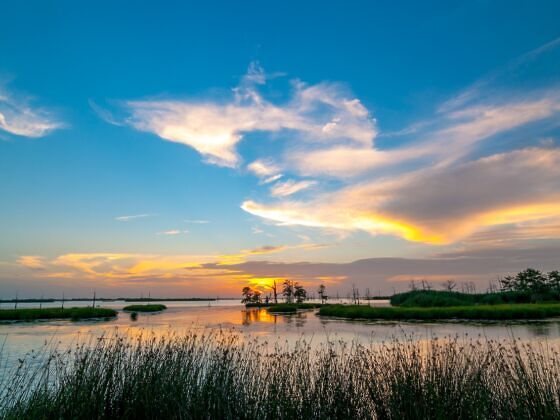THE BOAT SPED THROUGH the marshes, past a BP staging area of trailers and mobile homes set up on the water’s edge near a busy dock. Fishing boats with outstretched arms of nets sit idle, though I can’t tell if this is due to the spill. In the distance, column of thunderheads gathers, dark as crude.


New Orleans 5 Years After Katrina: Rebuilding Marshes
Up until today, most of my hurricane-related volunteer work in Louisiana has centered on houses. I’ve gutted, restored, and rebuilt, but what good is that if those rebuilt neighborhoods are left exposed to future storms?
Louisiana loses a football field of wetland every 38 minutes, thanks in part to channels cut for oil drilling. These natural barriers have historically helped slow down the wave action churned by big storms that move through in late summer, but they’re disappearing fast.
It seems appropriate, then, to honor the fifth anniversary of Hurricane Katrina’s landfall at the Louisiana-Mississippi state line with a project like this. I’ve signed up to plant marsh grass along man-dredged terraces near Barataria Bay—the same marshes and islands that were once the staging ground and hiding place for a pirate named Jean Lafitte who eventually helped save the city of New Orleans from British takeover in the War of 1812. In fact, the town I’ve disembarked from is named Lafitte.
I’m with a group of six volunteers organized by the Barataria-Terrebone National Estuary Program. We spend the day with our elbows in the warm, soupy water, planting tufts of the grass in thick clay around the perimeters of these v-shaped terraces. In time, the grass will grow to cover the entire earthen terrace.
We can’t work quickly enough to keep pace with the improbably fast wetland disappearance, but I’m mostly satisfied to do something—anything—for this fragile coast that’s been beat to death by human interference. Looking at a map, it seems impossible our collective actions could do so much damage to so vast an area, and that makes me wonder if my four hours of planting will make a damn bit of difference.
As we head back to shore after we’re finished planting, I’m better able to pick out the man-made marsh terraces now that I know what to look for. And it occurs to me: if humanity has so easily exacted such great damage in such a haphazard way, we must certainly be capable of great change if we just get in our boats and get organized.
Community Connection:
Read Megan’s thoughts about Hurricane Katrina in her essay, “Notes on the 4th Anniversary of Hurricane Katrina,” published in 2009 on The Travelers Notebook.